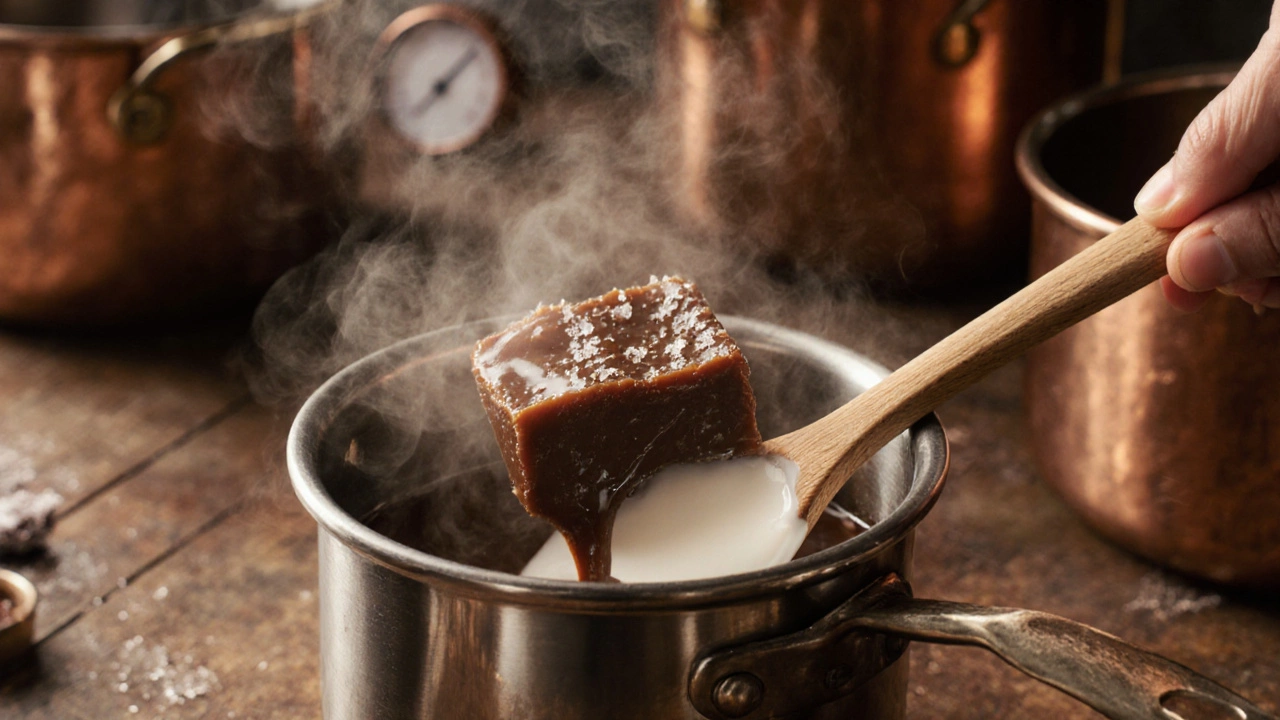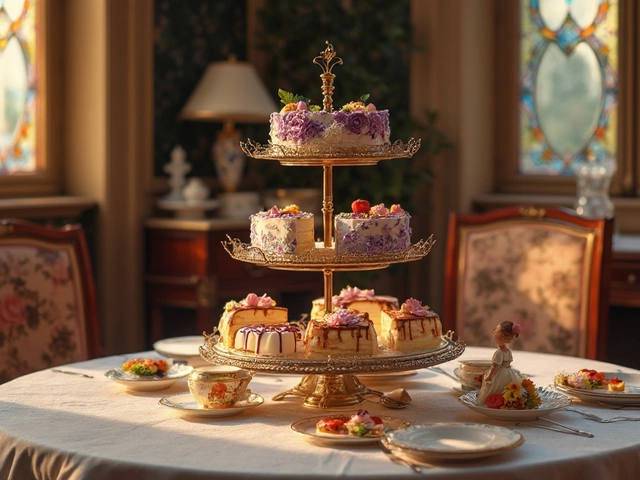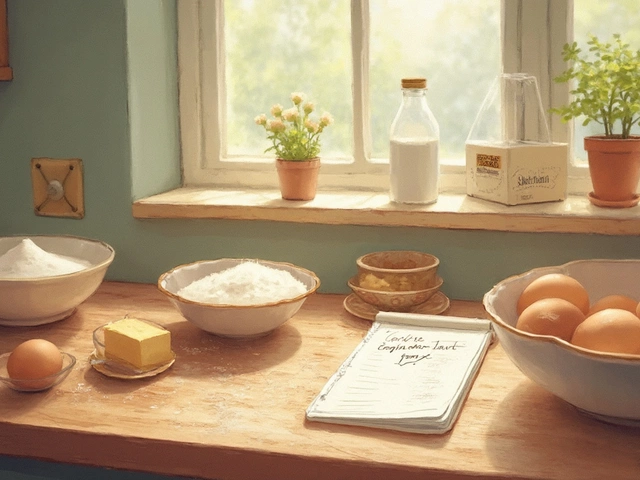Fudge Failure Fixer
What's Your Problem?
Critical Temperature Reference
Perfect setting temperature: 234°F (112°C)
(Soft-ball stage - essential for fudge to set properly)
Don't guess! Use a candy thermometer for success.
Recommended Rescue Solution
Select your fudge problem to see the solution.
Warning: Do NOT microwave or add more sugar/butter to fix failed fudge - this makes it worse.
You spent hours melting chocolate, stirring sugar, and waiting for that perfect temperature. You poured it into the pan, let it cool, and then-nothing. The fudge didn’t harden. It’s sticky, grainy, or just crumbles when you try to cut it. Before you toss it, stop. You didn’t fail. You just need a different plan.
Why Did Your Fudge Fail?
Fudge is simple in theory but finicky in practice. It’s not about the recipe-it’s about temperature and timing. Most failures happen because the sugar syrup didn’t reach the right stage. If it’s too cool, it won’t set. Too hot, and it turns brittle or grainy. Over-stirring after cooling starts the sugar crystals to grow, which makes it sandy. And if you skip the cooling step before beating, you’ll end up with a gooey mess.
Here’s what you’re probably dealing with:
- Soft, sticky fudge → Sugar syrup didn’t reach 234°F (112°C) - the soft-ball stage.
- Grainy or gritty texture → Sugar crystals formed during stirring after cooling.
- Crumbly or dry → Overcooked beyond 240°F (116°C), or too much evaporation.
- Oily or separated → Chocolate seized or butter didn’t emulsify properly.
None of these are permanent disasters. Each one has a rescue path.
Rescue 1: Turn Soft Fudge Into Chocolate Sauce
If your fudge is still soft after 24 hours, it’s not ruined-it’s just a sauce waiting to happen. Scoop it into a small saucepan, add 1/4 cup of heavy cream or whole milk, and heat gently over low heat. Stir until smooth. That’s it. You now have rich, decadent chocolate sauce.
Use it over ice cream, pancakes, or even drizzled on baked apples. Add a pinch of sea salt or a splash of vanilla for extra depth. This works even if the fudge was slightly grainy. The heat melts the crystals back down.
Rescue 2: Make Chocolate Truffles From Grainy Fudge
Grainy fudge is caused by sugar crystallization. That’s actually the same thing that happens when you make truffles-except you want it to be smooth. So, take your grainy batch, melt it with 2 tablespoons of coconut oil or butter, and chill it until firm enough to roll.
Roll into 1-inch balls. Coat them in cocoa powder, crushed nuts, shredded coconut, or melted chocolate. Store them in the fridge. You’ve turned a failed batch into elegant, no-bake truffles. People won’t know they’re made from "broken" fudge.
Rescue 3: Bake It Into Brownies or Blondies
Crumbly or dry fudge? Chop it into small pieces and fold it into your favorite brownie or blondie batter. Use a standard box mix or your go-to recipe. The fudge pieces will melt as they bake, creating pockets of rich chocolate throughout.
It adds moisture and depth. You’ll get a denser, fudgier brownie than usual. Bonus: the texture flaws disappear in the oven. This trick works especially well if your fudge had a slight burnt taste-baking mellows it out.
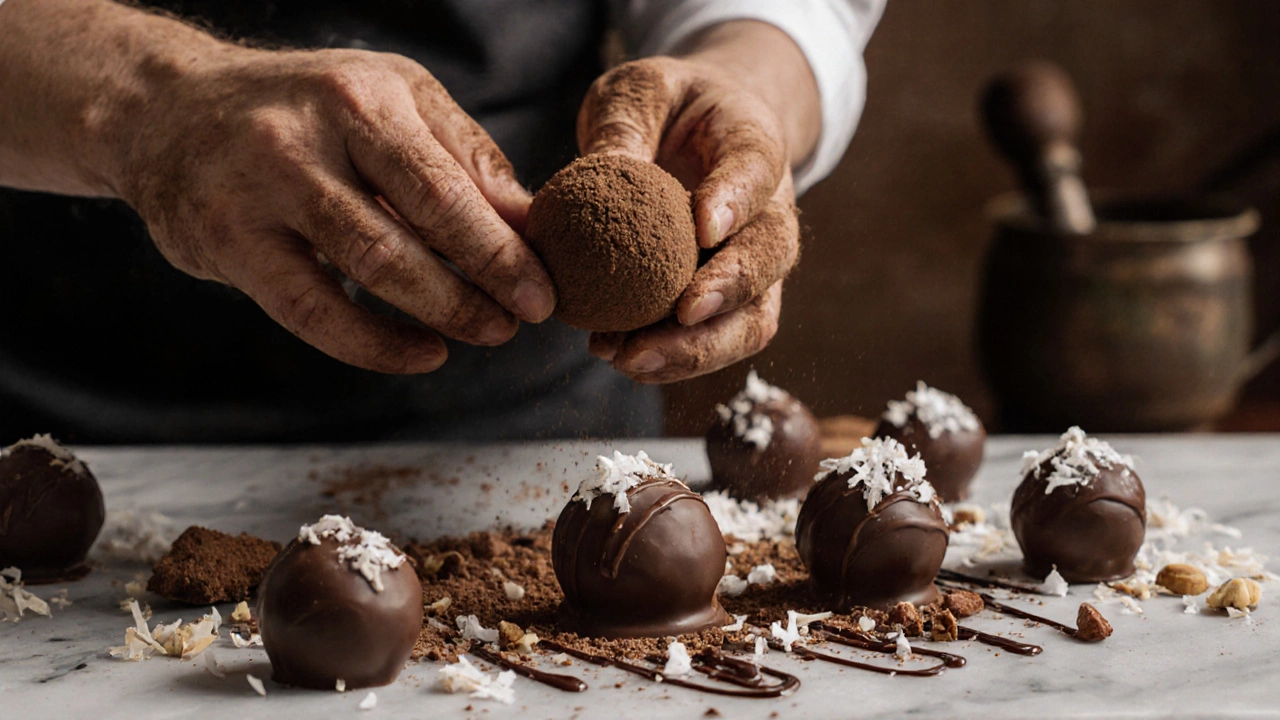
Rescue 4: Use It as a Filling for Cookies or Pastries
Soft or sticky fudge? Roll it into thin logs, chill until firm, then slice into 1/2-inch rounds. Sandwich them between two shortbread cookies or use them as filling for thumbprint cookies. You can also spread it inside phyllo pastry cups, top with a sprinkle of flaky salt, and bake for 5 minutes until warm and gooey.
This is a great way to repurpose fudge that’s too soft to cut. The structure of the cookie or pastry holds it together, and the warmth makes it feel indulgent.
Rescue 5: Make Chocolate Pudding or Custard
Take your failed fudge and melt it into 2 cups of warm milk or cream. Whisk in 2 tablespoons of cornstarch and 2 egg yolks. Cook over medium heat, stirring constantly, until thickened. Pour into ramekins and chill. You get a silky chocolate custard that tastes like a cross between pudding and melted fudge.
Top with whipped cream and a few chocolate shavings. It’s restaurant-quality, and no one will guess it started as a kitchen mistake.
Rescue 6: Freeze It for Future Use
If you’re not ready to fix it now, don’t throw it away. Wrap the whole pan tightly in plastic wrap, then foil, and freeze it. You can use frozen fudge later as a mix-in for milkshakes, ice cream, or even hot cocoa. Just drop a chunk into your blender or mug-it melts beautifully.
It lasts up to 3 months in the freezer. When you’re ready, you can thaw it and try one of the other fixes without rushing.
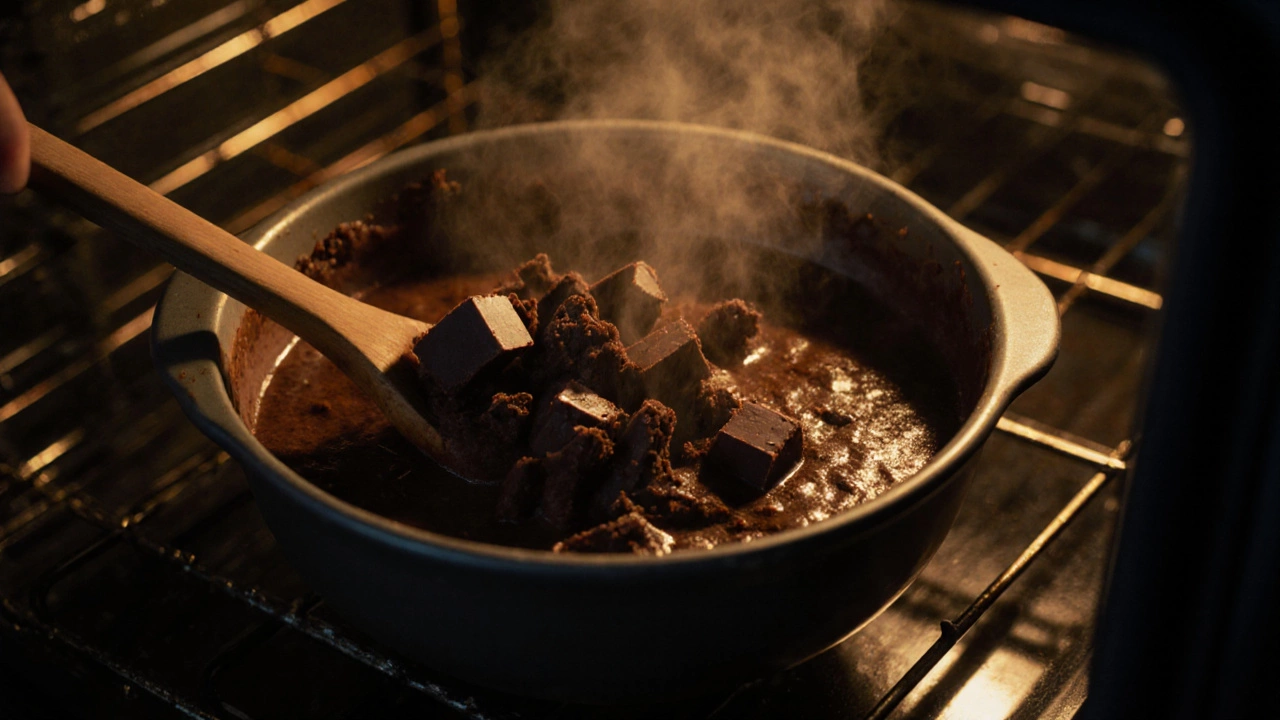
Rescue 7: Start Over-But Smarter
It’s okay to admit you need a do-over. But this time, use a candy thermometer. Don’t guess. Don’t eyeball. Set your stove to medium-low. Heat the sugar mixture slowly. Watch the temperature. When it hits 234°F, remove it from the heat. Let it cool to 110°F before stirring. That’s the secret.
Stirring too early is the #1 mistake. Wait. Let it cool. Then stir gently until it loses its shine. That’s when it starts to set. And don’t scrape the sides of the pan-crystals there can trigger graininess.
Also, use high-quality chocolate. Cheap chocolate chips contain stabilizers that interfere with setting. Go for at least 60% dark chocolate bars. Chop them yourself. It makes a difference.
What Not to Do
Don’t microwave failed fudge to "fix" it. That just melts it into a greasy puddle. Don’t add more sugar or butter to try to thicken it-this makes it worse. Don’t leave it out overnight hoping it’ll set. Fudge doesn’t harden by sitting-it needs the right sugar structure.
Pro Tip: Save the Recipe Notes
Write down what went wrong. Did you skip the thermometer? Did you stir while it was still hot? Did you use chocolate chips instead of bars? Keep a small notebook next to your stove. Next time, you’ll know exactly what to change.
Fudge fails more often than people admit. Even professional bakers have batches that don’t set. The difference? They know how to turn failure into something even better.
Can you fix fudge that didn’t set?
Yes. If your fudge didn’t set, it’s usually because the sugar syrup didn’t reach the soft-ball stage (234°F). You can remelt it with a little cream or milk and turn it into chocolate sauce, truffles, or pudding. Don’t try to re-cook it without adding liquid-it will burn.
Why is my fudge grainy?
Grainy fudge happens when sugar crystals form during stirring after cooling. This usually occurs if you stir too early or if sugar sticks to the sides of the pan and doesn’t fully dissolve. To fix it, melt it down with a bit of fat and turn it into truffles or brownie mix-ins.
Can you reheat failed fudge?
You can reheat it, but only with added liquid like cream, milk, or butter. Reheating plain fudge will make it oily or separate. Always add at least 2 tablespoons of liquid per cup of fudge and stir gently over low heat until smooth.
How long should fudge cool before stirring?
Let the fudge cool to 110°F (43°C) before stirring. That usually takes 15 to 20 minutes after removing it from the heat. Stir too soon, and you’ll get grainy fudge. Wait until it’s no longer shiny and starts to thicken slightly.
What chocolate is best for fudge?
Use high-quality dark chocolate bars with at least 60% cocoa content. Avoid chocolate chips-they contain additives that prevent smooth melting and setting. Chop the bar yourself for even melting.
Will fudge set in the fridge?
Fudge should set at room temperature. Putting it in the fridge can cause condensation and make the surface sticky. If it’s not setting after 2 hours at room temp, it likely didn’t reach the right temperature during cooking. Chill it only after you’ve fixed it with one of the rescue methods.
Final Thought
Fudge isn’t supposed to be perfect on the first try. It’s a lesson in patience, temperature control, and respect for sugar chemistry. The best bakers aren’t the ones who never fail-they’re the ones who know how to turn failure into something new. Your failed fudge isn’t trash. It’s just a different kind of dessert waiting to happen.

